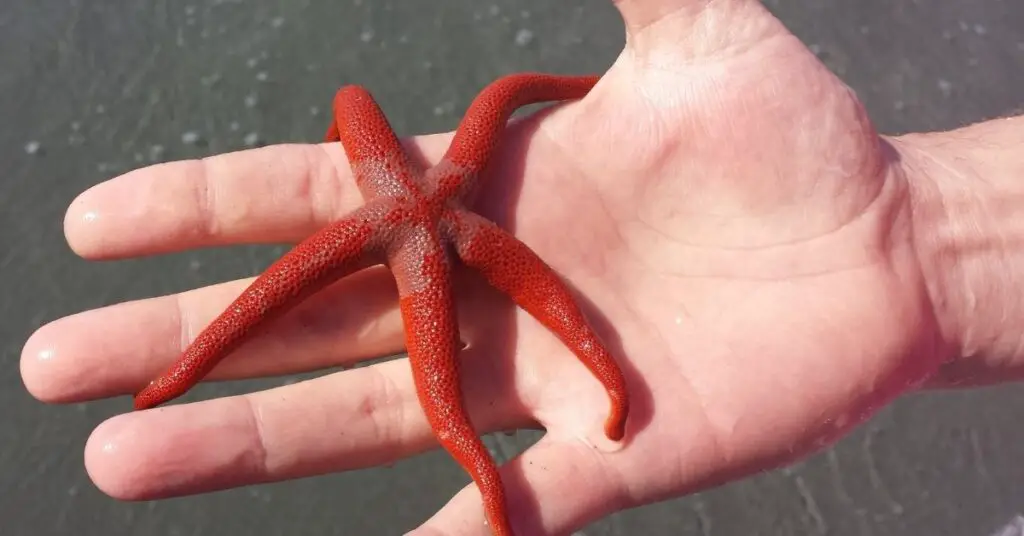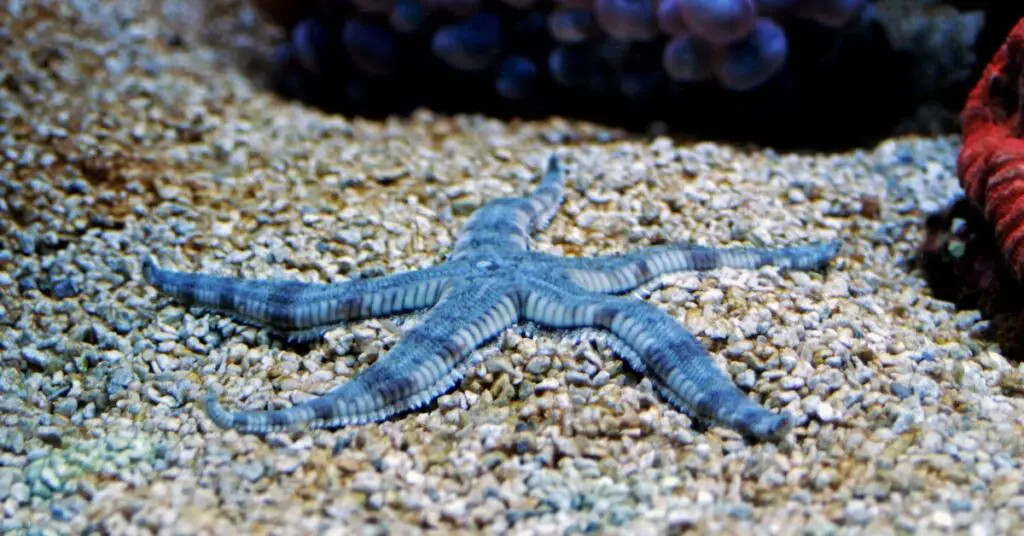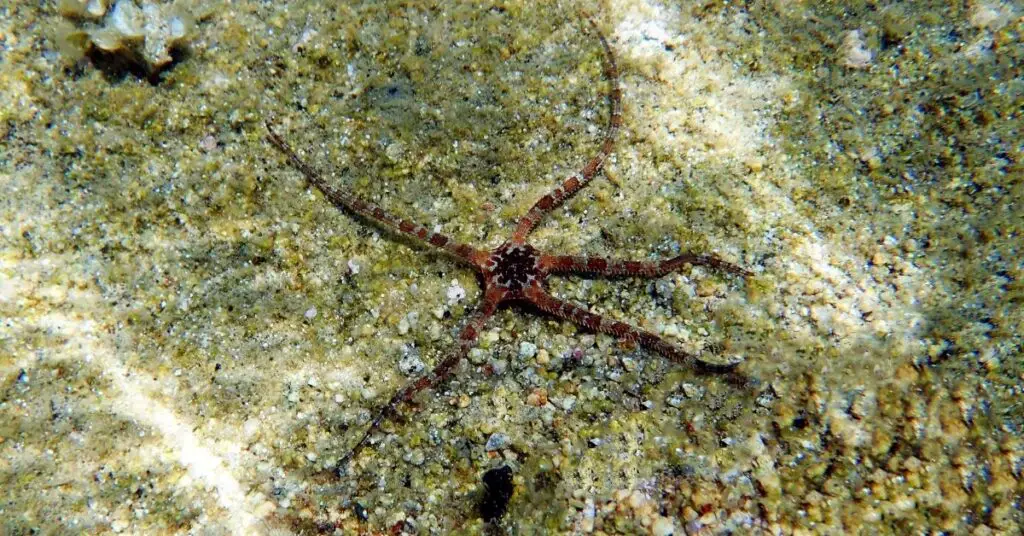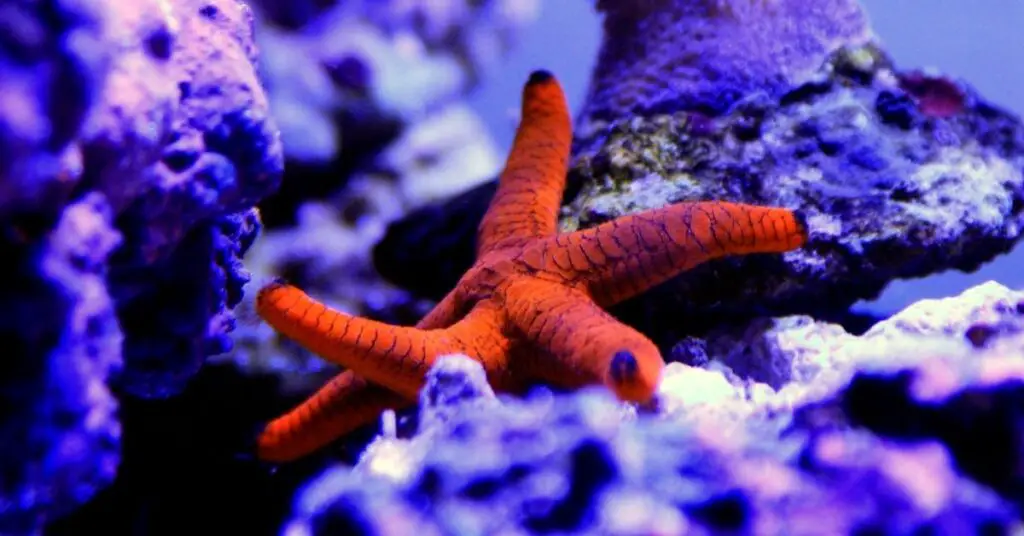Starfish is a famous sea creature you may witness across many reef tanks. While you see them pretty often, not all kinds of starfish are to be kept in reef tanks. These kinds include the sand sifting sea star and the chocolate chip starfish. But, are starfish reef safe?
Like the ones mentioned, some starfish are predatory animals in nature, which makes them unsafe for housing in reef tanks. However, that doesn’t apply to all starfish. So, to put it short, yes, starfish are reef safe, but only a few kinds.
Let’s take a look at the top safest types of starfish you can keep in your reef tank. We’ve comprehensively analyzed the questions and queries everyone has regarding starfish and reef tanks, so read on ahead to find!
What Makes Starfish Reef Safe?
Starfish should never be purchased without extensive research done beforehand. Starfish are sensitive creatures requiring a particular environment in their tank and cannot tolerate the slightest change in it. The facts that make up that environment include salinity, pH levels, and water temperature.
Instant Ocean Reef Crystals Reef Salt For 160 Gallons, Enriched Formulation For Aquariums
$66.79 (as of June 22, 2025 02:30 GMT +03:00 - More infoProduct prices and availability are accurate as of the date/time indicated and are subject to change. Any price and availability information displayed on [relevant Amazon Site(s), as applicable] at the time of purchase will apply to the purchase of this product.)ReefHD Reef Flux Anti-Fungal Treatment (100 gal)
Red Sea Reef Energy Plus 500ml (AB+) All in One Coral Food for Saltwater Aquarium Marine Reef Tanks | Food for Soft, LPS, SPS, and Non-Photosynthetic Corals
$29.99 ($3.55 / Fl Oz) (as of June 22, 2025 02:30 GMT +03:00 - More infoProduct prices and availability are accurate as of the date/time indicated and are subject to change. Any price and availability information displayed on [relevant Amazon Site(s), as applicable] at the time of purchase will apply to the purchase of this product.)An important fact to keep in mind during the setting up process is that a copper-based treatment will certainly not be tolerated by starfish. As mentioned earlier, some types of starfish are reef-safe; however, they may be predacious near smaller creatures like clams and shrimps. So, in essence, starfish could be labeled as reef safe with restraint.
It’s also important to note that starfish generally don’t perform well in enclosed areas, and you will constantly need a complementary feeding system intact. You need to carefully examine the starfish’s nature and meet its care requirements for their specific tanks.
5 Reef Safe Starfish For Your Aquarium
While taking care of starfish can be a time-consuming task for an owner with all the nitty gritties you need to care for, certain starfish breeds perform reasonably well in an enclosed environment. Here are the top safest starfish to keep in your reef tank, some of them for beginners aquarist as well.
Red Linckia Starfish (spotted Linckia, multicolor sea star)

Red Linckia Starfish is one of the best widespread starfish amongst all proud starfish owners. This is because its temperament is ever so peaceful, and the striking red color is so attractive. Its popularity is primarily due to its beautiful color and its kind nature.
You will see that this type of starfish is pretty active in nature, and you will see them going inside and outside all the time. Their primary source of food is usually through microorganisms. The reason why they make it to our top reef-safe starfish is that their feeding schedule is so hard to configure.
Comb Starfish (Sand Sifting)

Their name gives away that this starfish is rather subtle in their appearance that they are plainly colored. However, once you get a closer look, you will observe that there are, in fact, multiple stripes, prickles, and spots all across their body which makes them so beautiful to observe.
They are known to be predatory in nature as they usually attack and devour other starfish, as well as urchins and shrimps. However, the reason they made our list is because they can conceal themselves in a sand bed and then proceed to die and rot in the seabed. They easily consume substitute feeding and are easy to keep overall.
Banded Serpent Starfish (Banded Brittle Star)

Banded serpent starfish are carnivorous in nature which makes alternative feeding more relaxed than the first two. This bad boy can develop up to 1 foot in width so keeping them would mean a particularly large tank.
While they’re usually peaceful and serene in the fish tank, they will shy away mostly as they prefer staying up and feeding themselves at night. However, if you give them some time to adapt, they pick up to be more lively through the day and leave their nocturnal lifestyle.
You will see that the serpent stars come in a variety of colors. The red ones are also considered to be reef safe, but you should stray away from green ones at all costs.
Fromia Starfish (Black Spotted Starfish)

All sorts of Fromia starfish are considered to be reef safe, and all of them are ones you should definitely get. Namely, you should get the marbled Fromia, Red fromia, and the Juvenile fromia starfish.
They all have the traditionally loved starfish shape and will certainly that glimpse of color that catches your eye in your aquarium. You will see that they are the perfect inhabitant of your aquarium and are active all throughout the day and night.
They mostly survive on debris and films, but you can also do substitute feeding through flaked and meaty foods as well as nori.
Brittle Starfish (serpent stars)
![Are Starfish Reef Safe? [5 Examples of Reef safe starfish]](https://reefkeepingworld.com/wp-content/uploads/2021/03/Brittle-Starfish-1024x536.jpg)
Similar to the Formia fish, the brittle starfish has multiple types that are all suitable for this list. You will find them in an endless variety of colors and combinations; red, fancy, knobby, and yellow banded being some of the most popular ones.
They’re definitely the most frequently kept starfish in the at-home tanks, and people genuinely enjoy collecting brittle starfish as their hobby. While you will need to establish a fixed system of substitute feeding, they are usually easier amongst all starfish types to keep in a reef tank.
However, it is worth mentioning that there are a few kinds of brittle starfish that might not be suitable to be kept in a reef tank. The most notable example being of the green brittle starfish. So, it’s better that you do thorough research before getting yourself one.
Also, it is easy to confuse the serpent starfish with brittle starfish due to their similar appearance; one easy way to tell them apart is that brittle starfish usually have a spiky skin surface while the serpent starfish have a smoother and more shiny appearance.
Conclusion
Keeping a starfish in a reef tank can be a pesky task, but with thorough research, you will undoubtedly find the perfect one for you. We hope that our article helped you learn more about starfish and how they can behave in a reef tank.
References:
- Starfish, Urchins, and Other Echinoderms by Daniel Gilpin

![Are Starfish Reef Safe? [5 Examples of Reef safe starfish]](https://reefkeepingworld.com/wp-content/uploads/2021/03/Reef-Safe-Starfish.jpg)














4 thoughts on “Are Starfish Reef Safe? [5 Examples of Reef safe starfish]”
Comments are closed.